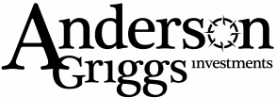|
A few weeks ago Justin attended an investment seminar in Orlando, Florida. One of the Keynote speakers was Dr. Jeremy Siegal, Wharton School finance professor and author of the best seller Stocks for the Long Run. Dr. Siegal left such an impression on Justin that he had to give me a call and share the good news with me. - See more at: http://www.andersongriggs.com/content/dow-15000#sthash.ac4vDHN8.dpuf Dr. Siegal laid out a case for owning stocks, and more importantly, for owning stocks today. As with most academics, statements are backed up by reams of data. Dr. Siegal’s presentation was loaded with this data that Justin shared with me on his return.
Having been privileged to Dr. Siegals’ data I was not surprised when this weeks’ Barron’s cover story was DOW 15,000, written by Gene Epstein and based on the findings of Dr. Siegal and his staff. Mr. Epstein’s first paragraph states the case: “Based on cyclical patterns of market history, the odds are better than two chances in three that the Dow Jones Industrial Average will reach 15,000 or higher over the next two years. Based on the same cyclical patterns, there’s about a 50-50 chance that he Dow could hit 17,000 or more.” For those of you who know me, I’m not one who is easily taken in by cyclical data. Nor do I believe that what happened in years past can accurately predict what will happen in the near future. What I do believe, is businesses must earn profits that exceed borrowing costs. Over longer time periods the positive excess returns earned by these businesses will be recognized in valuations and reward the owners of the businesses with a higher return. History has shown that this is true. Using Dr. Siegel’s data, which covers the period from January 1802 through December 2011, common stocks returned 6.6% a year after inflation, vs. the 3.6% that bonds earned and 2.7% from short-term treasury bills. In the short run, stocks and bonds are valued more by the moods of individual investors, not by any form or rational thought. This behavior creates an opportunity for long-term investors and that is why the article DOW 15,000 has meaning. The case I’ve alluded to is based on “The Rubber-Band Cycle”. It states: Whenever stock-market returns have stretched toward an extreme over the past 141 years, they have generally been tugged back, with periods of strength following stretches of weakness, and vice versa. While he was at Wharton, Barron’s asked Jeremy Schwartz, the head research assistant to Dr. Siegal, to use The Rubber-Band Cycle to see if it was valid when stock prices performed poorly over trailing five year periods. This period was chosen because it accurately reflected our current place in time, as the last five years of stock market returns have been in the lowest quartile of rolling five-year periods over the past 141 years. The results are pretty impressive. Schwartz identified 33 five-year periods in the lowest quartile for which returns could be verified over the next two years. These were his results: The median annual return for the two year period following the bad performance was 20%. 23 of the 33 periods or 70% of the time annual returns were 11.7% or higher. Comments are closed.
|
Kendall J. Anderson, CFA, Founder
Justin T. Anderson, President
Categories
All
Archives
April 2024
|
|
Common Sense Investment Management for Intelligent Investors
|



 RSS Feed
RSS Feed